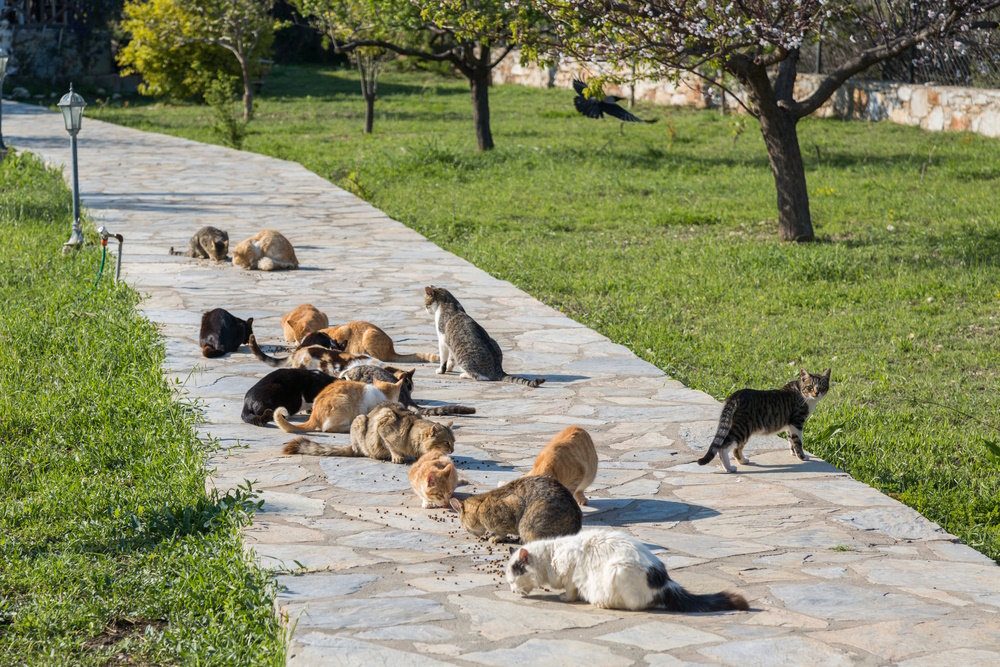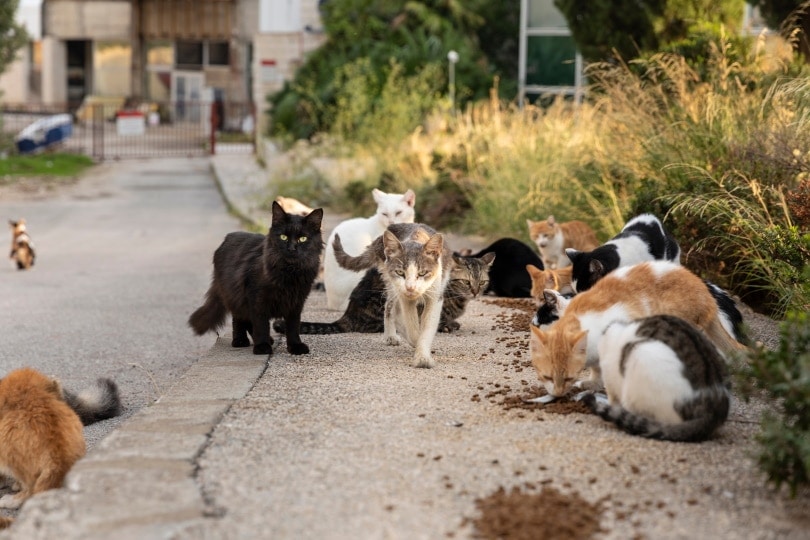Istanbul’s cats are famous the world over. Apart from interacting with customers in tea shops and restaurants, they also ride buses and ferries and prefer to lounge in the sun.
Istanbul’s citizens ensure that the cats have a place to sleep, food, and drink even though the cats have no owners. Cats have always held a special place in the hearts of Istanbul residents, as evidenced by the amount of love and attention they show them.
Istanbul is located in northwestern Turkey. It is situated on the Bosphorus Peninsula, between the Black Sea and the Sea of Marmara, and it crosses both Europe and Asia.
Istanbul has a long and storied history. The Byzantine and Ottoman Empires were both centered in the city, which was long called Constantinople. Ankara became the nation’s capital in the 1920s when the Republic of Turkey was established.
Istanbul, a historical and culturally rich city, has a certain allure that goes beyond its amazing buildings and vibrant bazaars. This charming city has an impressive cat population as well, which has earned it the charming moniker “Catsanbul.” But why is Istanbul such a cat lover’s paradise? Let’s explore the intriguing causes of the city’s affection for these furry friends.
A Historical Connection: Cats as Guardians of the City
Cats have been a part of Istanbul for centuries, weaving their way through the rich history of the city. Wooden homes were common during the Ottoman era, which gave mice and rats the ideal home. With their innate predatory tendencies, cats made excellent guardians, keeping these unwanted pests out of homes and businesses. Because of this historical necessity, humans and cats have a stronger bond and a culture of respect and care for these furry friends.
Religious Reverence: Cats in Islamic Lore
Beyond their practical role, cats hold a special place in Islamic lore. It is believed that the Prophet Muhammad, who is regarded as the forerunner of Islam, loved cats. According to a common story, the Prophet chopped off his sleeve rather than wake up a cat that was dozing on his robe. Even today, many Istanbul residents still hold this deep respect for cats, believing that taking care of them will bring them blessings and good fortune.
A Community Effort: Caring for Istanbul’s Cats
Istanbul’s cats are not merely tolerated; they are embraced as an integral part of the community. Locals take it upon themselves to provide food, water, and shelter for these furry residents. Small bowls of food appear by doorways and makeshift shelters offer refuge from the elements. This collective responsibility ensures that Istanbul’s cats are well-fed and cared for.
A Tourist Delight: Feline Encounters in Istanbul
For visitors to Istanbul, encounters with these friendly felines are a delightful part of the city experience. Cats bask in the sun, stroll through bustling streets, and even find their way into cafes and restaurants, adding a touch of charm to every corner. Tourists often find themselves charmed by these furry ambassadors, sharing photos and stories of their feline encounters long after their trip is over.
Beyond the Cuteness: Addressing the Challenges
Although many people in Istanbul enjoy having cats, there are drawbacks as well. The sheer number of cats can lead to issues like overpopulation and disease. Initiatives like the Trap-Neuter-Return (TNR) programs have been put into place to address these worries; their goal is to control the population in a humane manner.
A Celebration of the Cat-Human Bond
Istanbul’s love affair with cats is a testament to the deep connection between humans and animals. The city’s residents have created a unique environment where cats are not just tolerated but cherished and cared for. This harmonious coexistence between humans and felines is a heartwarming example of how compassion and respect can create a haven for both.
So, why does Turkey have so many cats?
The answer lies in a combination of factors:
- Historical necessity: Cats played a crucial role in controlling rodent populations in the city’s wooden houses during the Ottoman era.
- Religious reverence: Islamic lore holds cats in high regard, with the Prophet Muhammad known for his fondness for these animals.
- Community care: Istanbul’s residents take it upon themselves to provide food, water, and shelter for the city’s cats.
- Tourist attraction: Cats have become an integral part of the Istanbul experience, charming visitors with their friendly nature.
Additional Resources:
- Cats of Istanbul: https://www.catsofistanbul.com/
- Istanbul Cat Museum: https://istanbulkatedimuzesi.com/
- Kedi (2016 documentary): https://www.imdb.com/title/tt4287344/
Frequently Asked Questions:
- How many cats are there in Istanbul?
Estimates vary, but the number is thought to be in the hundreds of thousands.
- Are the cats friendly?
Generally, yes. Istanbul’s cats are known for their friendly and approachable nature.
- Can I feed the cats?
Yes, but it’s important to use commercially available cat food and avoid giving them human food.
- What can I do to help Istanbul’s cats?
You can support organizations that provide food, shelter, and medical care for the city’s cats.
Istanbul’s love affair with cats is a heartwarming example of the deep bond between humans and animals. The city’s residents have created a unique environment where cats are not just tolerated but cherished and cared for. This harmonious coexistence between humans and felines is a testament to the power of compassion and respect.
Where Do Istanbul’s Cats Come From?
Research suggests domestic cats in Istanbul likely originated in the Middle East, specifically the Fertile Crescent. According to recent DNA research, the first domesticated cats may have originated in Anatolia, further reducing the field of possibilities.
The domestication process may have begun when people began to settle in the Fertile Crescent around 10,000 years ago. There are those who contend that because cats were drawn to homes by rodents, they started the domestication process by deciding to live close to humans.
Cats probably spread from the Fertile Crescent along with agriculture. Evidence from Cyprus suggests that as early as 9,500 years ago, humans may have kept cats as pets. By the time of the Egyptian New Kingdom Period paintings, which show cats wearing collars and eating from bowls, it is likely that cats had been domesticated.

How Does Istanbul Care for Her Cats?
Istanbul’s residents carry food to dole out when they come across hungry kitties. Cats can find shelter from the weather in volunteer-maintained, hygienic facilities spread out across the city.
Volunteers work together to ensure neighborhood cats are fed and healthy. They also make sure the cats they care for are spayed and neutered. The city of Istanbul employs veterinarians and funds several veterinary clinics.
It pays for stray cats to be spayed and neutered and to receive emergency care. There’s even a mobile Vetbus that provides medical services in locations throughout the city. Community members regularly contribute money to ensure local cats receive medical care not provided by the municipality.

